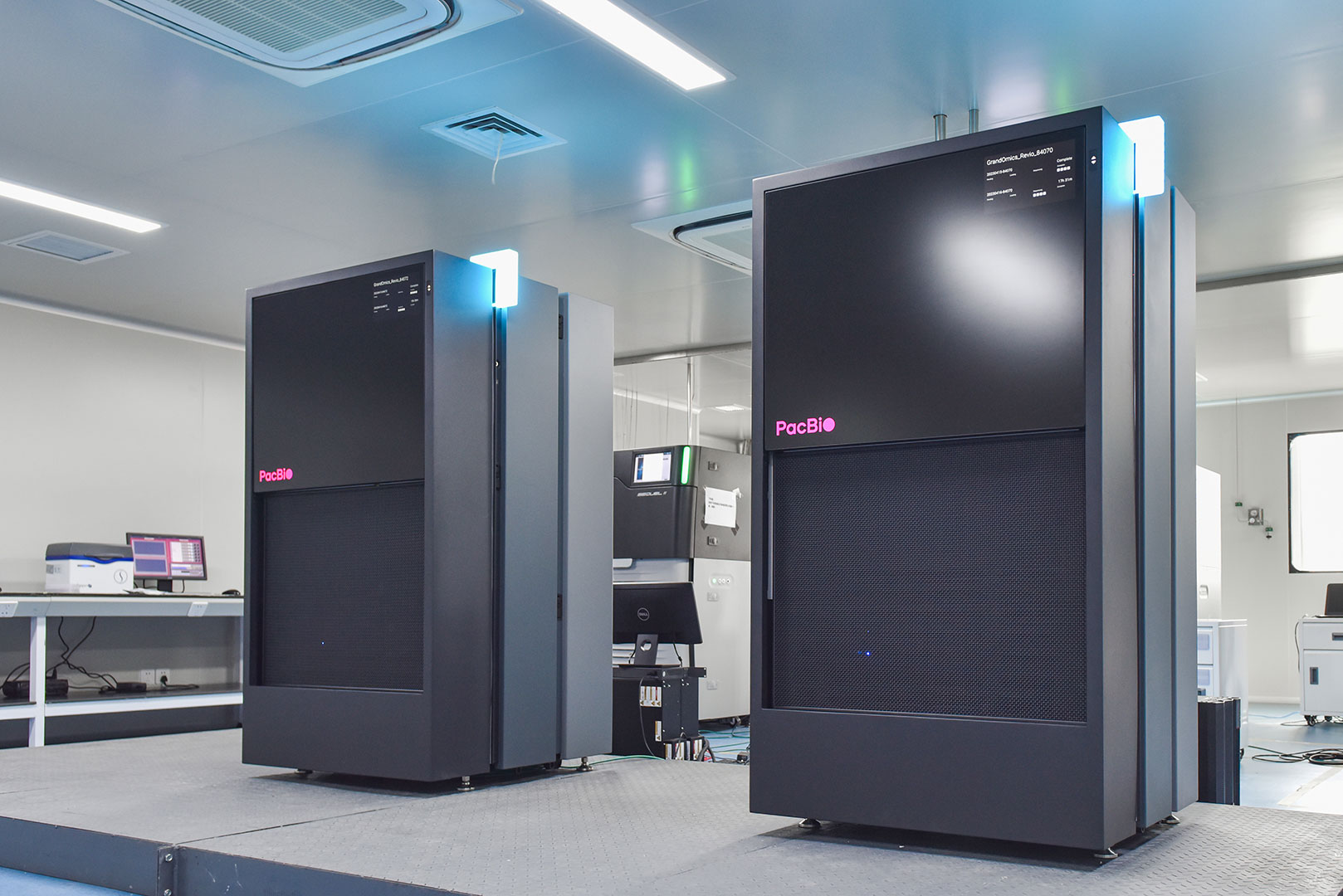Conference Announcement | January 12-17, GrandOmics sincerely invites you to participate in the 2024 PAG event!
International Plant & Animal Genome (PAG Conference) is an internationally renowned top academic conference on animal and plant genomics research, held from January 12th to 17th, 2024 in San Diego, CA, USA. The PAG consists of scientific workshops, plenary speakers, industry workshops, digital tools and resources sessions, posters sessions, and exhibits with vendors presenting industry related productions and services. It is designed to provide a forum on recent developments and future plans for plant and animal genome projects. Conference is an excellent opportunity to exchange ideas and applications on this internationally important project. This conference covers the latest research progress in genomics of major crops, cutting-edge developments in bioinformatics and high-throughput sequencing technology, and provides a high-level communication platform for genetic researchers in multiple disciplines and fields.
Meeting Information
Location: San Diego, CA, USA
Time: January 12-17, 2024
Website: https://intlpag.org/31/
Program Overview
Day One / Friday, January 12, 2024
| 8:00 AM – 9:00 PM | Meeting Management Office Open |
| 8:00 AM – 9:00 PM | Speaker Ready Room Open |
| 9:00 AM – 9:00 PM | Registration Open |
| 9:30 AM – 10:30 AM | Coffee Break |
| 10:30 AM – 12:40 PM | Workshop Session* |
| 1:30 PM – 3:40 PM | Workshop Session* |
| 2:00 PM – 9:00 PM | Poster Hanging Access |
| 3:00 PM – 4:00 PM | Coffee Break |
| 4:00 PM – 6:10 PM | Workshop Session* |
| 7:00 AM – 8:00 AM | Continental Breakfast |
| 7:00 AM – 7:00 PM | Meeting Management Office Open |
| 7:00 AM – 7:00 PM | Speaker Ready Room Open |
| 7:30 AM – 7:00 PM | Registration Open |
| 7:30 AM – 9:00 PM | Poster Hanging Access |
| 8:00 AM – 10:10 AM | Workshop Session* |
| 8:00 AM – 12:40 PM | Workshop Session* |
| 8:00 AM – 6:10 PM | Workshop Session* |
| 9:30 AM – 10:30 AM | Coffee Break |
| 10:30 AM – 12:40 PM | Workshop Session* |
| 12:00 PM – 9:00 PM | Poster Viewing Access |
| 12:00 PM – 1:30 PM | Lunch |
| 1:30 PM – 3:40 PM | Workshop Session* |
| 1:30 PM – 3:40 PM | Digital Tools and Resources Workshop #1 |
| 3:00 PM – 4:00 PM | Coffee Break |
| 4:00 PM – 6:10 PM | Workshop Session* |
| 6:00 PM – 6:30 PM | Coffee Break |
| 6:20 PM – 8:30 PM | Workshop Session* |
| 7:00 AM – 8:00 AM | Continental Breakfast |
| 7:00 AM – 7:00 PM | Meeting Management Office Open |
| 7:00 AM – 7:00 PM | Speaker Ready Room Open |
| 7:30 AM – 12:00 PM | Poster Hanging Access |
| 7:30 AM – 5:00 PM | Registration Open |
| 8:00 AM – 10:10 AM | Workshop Session* |
| 8:00 AM – 12:40 PM | Workshop Session* |
| 9:30 AM – 10:30 AM | Coffee Break |
| 10:30 AM – 12:40 PM | Workshop Session* |
| 12:00 PM – 1:30 PM | Lunch |
| 12:00 PM – 8:45 PM | Exhibits Open |
| 1:30 PM – 3:40 PM | Workshop Session* |
| 1:30 PM – 6:20 PM | Workshop Session* |
| 3:00 PM – 4:00 PM | Coffee Break |
| 4:00 PM – 6:10 PM | Workshop Session* |
| 6:30 PM – 7:15 PM | Plenary Lecture – Appolinaire DjikengDirector General, International Livestock Research Institute (ILRI), Kenya Talk Title: “Livestock and the Food Systems: A Focus on Smallholder Systems in the Global South” |
| 7:15 PM – 8:45 PM | Opening Reception |
| 7:00 AM – 8:00 AM | Continental Breakfast |
| 7:00 AM – 7:00 PM | Meeting Management Office Open |
| 7:00 AM – 7:00 PM | Speaker Ready Room Open |
| 7:00 AM – 9:30 PM | Poster Viewing Access |
| 7:30 AM – 5:00 PM | Registration Open |
| 8:00 AM – 8:45 AM | Plenary Lecture – Scott EdwardsProfessor and Chair, Department of Organismic and Evolutionary Biology, Harvard University; Curator of Ornithology, Museum of Comparative Zoology, USATalk Title: “Comparative Population Pangenomes: A New Frontier for the Evolutionary Analysis of Birds” |
| 8:45 AM – 9:30 AM | Plenary Lecture – Lucy Van DorpUCL Excellence Fellow, University College London, UKTalk Title: “Tracking Pathogens in Space and Time” |
| 9:30 AM – 11:30 AM | Coffee Break |
| 9:30 AM – 5:00 PM | Exhibits Open |
| 10:00 AM – 11:30 AM | Poster Session – Even Numbers |
| 11:30 PM – 1:00 PM | Lunch |
| 12:50 PM – 3:00 PM | Workshop Session* |
| 12:50 PM – 3:00 PM | Digital Tools and Resources Workshop #2 |
| 3:00 PM – 4:30 PM | Poster Session – Odd Numbers |
| 3:00 PM – 4:30 PM | Coffee Break |
| 4:00 PM – 6:10 PM | Workshop Session* |
| 6:00 PM – 6:30 PM | Coffee Break |
| 6:20 PM – 8:30 PM | Workshop Session* |
| 7:00 AM – 8:00 AM | Continental Breakfast |
| 7:00 AM – 7:00 PM | Meeting Management Office Open |
| 7:00 AM – 7:00 PM | Speaker Ready Room Open |
| 7:00 AM – 3:00 PM | Poster Viewing Access |
| 7:30 AM – 3:00 PM | Registration Open |
| 8:00 AM – 8:45 AM | Plenary Lecture – Katrien DevosDistinguished Research Professor, University of Georgia, USATalk Title: “Ensuring Food Security in a Changing Climate: Adopt an Orphan” (Preliminary Title) |
| 8:45 AM – 9:30 AM | Plenary Lecture – Amy Marshall ColonAssociate Professor, Department of Plant Biology, University of Illinois Urbana-Champaign, USATalk Title: “Integrative Modeling for the Development of in Silico Crops” |
| 9:30 AM – 10:30 AM | Coffee Break |
| 9:30 AM – 3:00 PM | Exhibits Open |
| 10:30 AM – 12:40 PM | Workshop Session* |
| 10:30 AM – 6:10 PM | Workshop Session* |
| 10:30 AM – 12:40 PM | Digital Tools and Resources Workshop #3 |
| 12:00 PM – 1:30 PM | Lunch |
| 1:30 PM – 3:40 PM | Workshop Session* |
| 2:00 PM – 3:00 PM | Coffee Break |
| 4:00 PM – 6:10 PM | Workshop Session* |
| 6:00 PM – 6:30 PM | Coffee Break |
| 6:20 PM – 8:30 PM | Workshop Session* |
| 6:20 PM – 9:30 PM | Workshop Session* |
| 7:00 AM – 8:00 AM | Continental Breakfast |
| 7:00 AM – 2:00 PM | Speaker Ready Room Open |
| 7:00 AM – 5:00 PM | Meeting Management Office Open |
| 7:00 AM – 12:00 PM | Poster Viewing Access |
| 7:30 AM – 12:00 PM | Registration Open |
| 8:00 AM – 8:45 AM | Plenary Lecture – Dirk InzeDirector, VIB-UGent Center for Plant Systems Biology, BelgiumTalk Title: “Multiplex Engineering of Yield Traits in Maize” |
| 8:45 AM-9:30 AM | Plenary Lecture – Virginia WalbotProfessor Emerita, Stanford University, USATalk Title: “Building a Maize Anther” |
| 9:30 AM-10:30 AM | Coffee Break |
| 10:30 AM – 12:40 PM | Workshop Session* |
| 10:30 AM – 12:40 PM | Digital Tools and Resources Workshop #4 |
| 12:00 PM – 1:30 PM | Lunch |
| 7:15 PM – 11:55 PM | Banquet Dinner |
Join us in #PAG31
Our booth No. 504
Excited to see you here!
We will participate with you to explore the application of multi-omics technologies in animal and plant research, and work together to promote the development and innovation of genomics, with our extensive reading of omics products and experience in animal and plant genome projects!




























